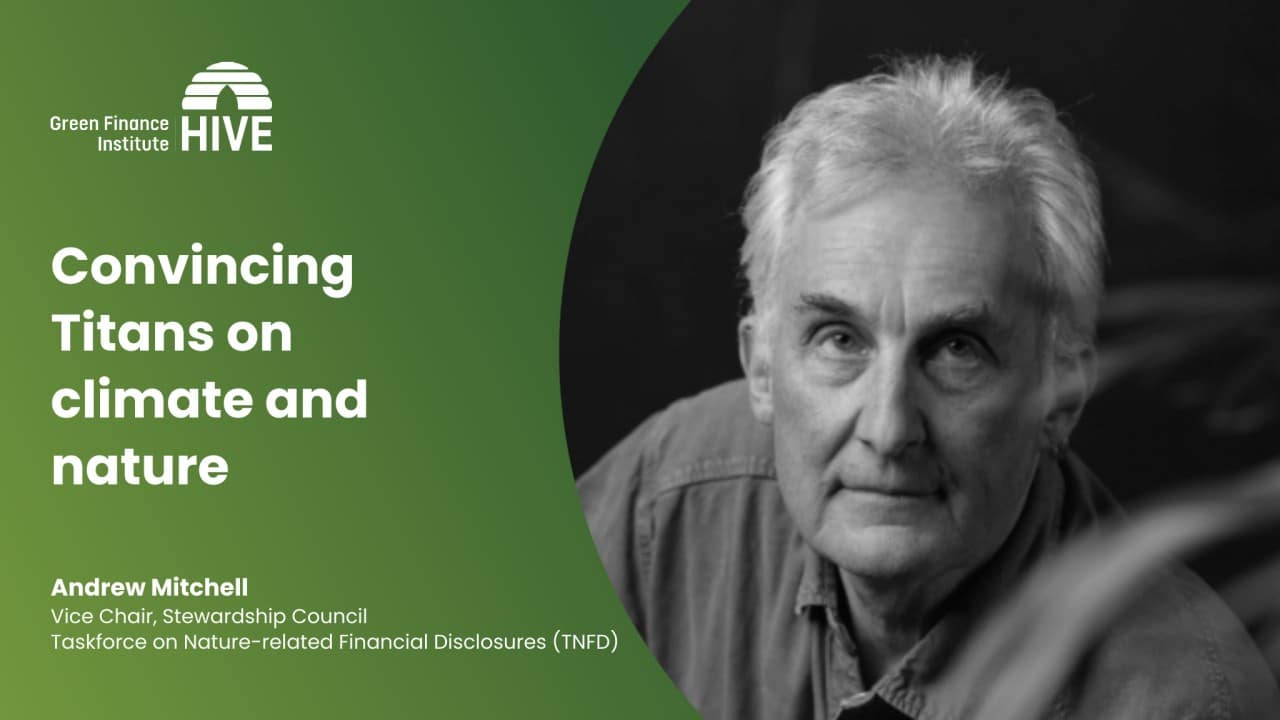By Andrew W. Mitchell
Vice Chair, TNFD Stewardship Council
How can a Titan know it is heading for extinction? And what’s more important than data, tools or rules – in reaching a decision to avoid the outcome?
Patagotitan mayorum, known as a Titanosaur, was the biggest piece of biodiversity ever to walk the earth. If the idea of its own extinction could have entered its head, it might have acted differently. Today, most Titans have access to a dazzling dashboard of data and a clear pathway to head off their own demise, yet surprisingly, some seem unwilling to act. Maybe, like Titanosaurs, they believe they are top of the food chain or do not have a choice.
Some titans of our financial and corporate world may feel that they are in such a bind. The relentless ‘model of more’ to which they are wedded, makes if difficult for them to adapt to the changing paradigms of a finite world. Doughnut economics is not yet for them. Climate has been the first inconvenient truth to force itself onto the edges of their economic radar screen, catalysing a revolution in the way the global energy system will evolve. Some Titans have already lost out there.
Nature is now having its moment of truth as we recognise it’s not just about butterflies and bees, but it is rather the giant infrastructure that keeps the Earth safe and supplied. Silent, unseen and mobile, nature can underpin or unpick some $44Tn of our global economy. Think soil microbes delivering food; plankton locking up carbon as limestone; or COVID 19’s $20Tn bill and counting. With agriculture the biggest source of nature’s degradation, a revolution in our global food system is surely coming.
This revolution presents both nature-related risks and opportunities. They are not small or slow to emerge, but they are complicated and more so than climate. The Taskforce on Climate related financial Disclosure (TCFD) coupled with the Paris Agreement in 2015, has done much to galvanise understanding, and arguably re-direct the movement of capital towards climate positive outcomes. Could its cousin, the Taskforce on Nature-related Financial Disclosure (TNFD), due out in late 2023, achieve the same for biodiversity?
Much will depend on the meeting of 196 Governments this week in Montreal known as COP 15 of the Convention on Biological Diversity. This is the legal body that, were it to have met 95 million years ago, would have been very exercised about the outlook for Patagotitan mayorum. Now their grave concern is the survival of all life on Earth, and by extension our own. Yet as each COP passes, despite all the data, tools, and rules, and just like climate, the safety indicators for nature continue to get worse.
Data is part of the problem. Where nature is concerned, the tools and dashboards used by finance to guide their direction of travel are equivalent to driving a 1960s car. A speedometer; a fuel gauge and a foot, mostly on the pedal. Today’s car dashboards are filled with safety information; now you can almost take your hands off the wheel. In the coming decade, transactions will move towards a similar more accurate reflection of the equilibrium required between financial, social and natural capital, to stay on a safe course.
Targets, and rules are vital too and for the use of natural capital these are scarce. The Global Biodiversity Framework (GBF) to be agreed in Montreal this week, is designed to deliver these. Mandatory reporting on nature; 30% of the Earth’s surface protected by 2030; a nature positive economy by 2050. All are on the table but all will be challenged by one word. Debt. The debt that poor nations feel that rich nations owe to them, to compensate for the loss and damage caused by pollution of the atmosphere and exploitation of nature, to industrialise. This will have to be addressed.
There is another ingredient, beyond data, tools or frameworks that we need now too. And that is the belief and inspiration that enables a transformation to occur. At this time of year, when several religious festivals are celebrated, we are reminded that it is not data that moves us as a human race – it is love. We cannot hug a ton of CO2, but we do love nature. That gives me hope that this transformation is already underway.
Since helping to catalyse the TNFD with many friends during lockdown, I have been amazed and moved at the speed with which it has spread as an idea around the world. An obsession with numbers alone can be numbing. TNFD will succeed because of a growing collective, and unstoppable belief that, to avoid a Titanic extinction, the movement of money has to change to become both climate and nature positive.
